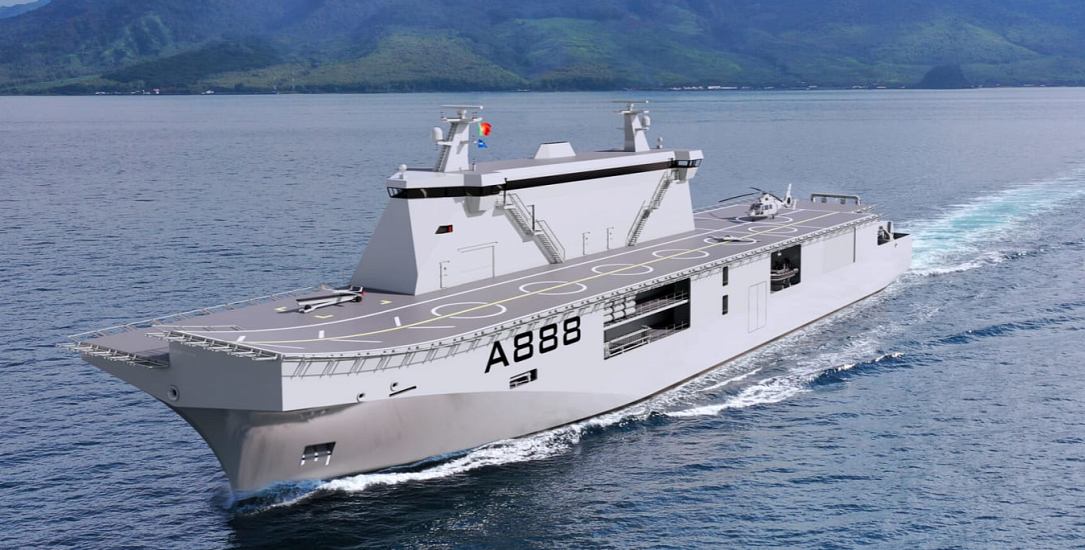SOURCE: AFI


The rapid evolution of unmanned systems and artificial intelligence (AI) in modern warfare has presented a paradigm shift in naval strategy. As the world’s leading military powers, like the U.S., China, and Russia, increasingly embrace autonomous technology and unmanned aerial systems (UAS) for naval warfare, it is critical for the Indian Navy to advance its capabilities in this domain. One of the most revolutionary concepts is the development of drone carriers—vessels designed to deploy, recover, and command fleets of unmanned systems. For India, the development of an indigenous drone carrier is not just desirable but necessary to meet future security challenges and maintain maritime dominance in the Indian Ocean Region (IOR).
The Indian Navy operates within the vast expanses of the IOR, an area critical to global maritime trade and security. The region is also the theater of increasing competition with China’s People’s Liberation Army Navy (PLAN) and frequent forays by other external powers. While the Indian Navy has made significant strides in expanding its conventional fleet, the inclusion of a drone carrier would exponentially expand its operational reach.
Drones can carry out various roles including intelligence, surveillance, and reconnaissance (ISR) missions, maritime strike operations, electronic warfare, and anti-submarine warfare. With a drone carrier, the Navy can project power over greater distances without exposing manned vessels or personnel to unnecessary risks. In high-risk zones or contested waters, drone swarms could be deployed to gather intelligence or even neutralize threats without jeopardizing human lives.
Compared to traditional aircraft carriers and crewed platforms, drone carriers offer a cost-efficient means of expanding naval capabilities. Drones, especially when deployed in swarms, are a force multiplier that can overwhelm enemy defenses by sheer numbers or precision strikes, performing many roles traditionally reserved for manned aircraft or ships. They can serve as an extra layer of defense, work as scouts to extend the detection range, or carry out saturation attacks to disable enemy platforms.
The cost of building and operating manned aircraft and warships is immense, as are the personnel and logistics demands of maintaining these fleets. Unmanned systems, on the other hand, can be produced at a fraction of the cost, require less crew onboard, and reduce the risk of loss of life. A drone carrier, with a smaller complement of sailors and a large number of UAS, offers the Indian Navy a highly effective way to increase its presence in the IOR while optimizing expenditure.
The Indian Navy faces a diverse array of threats, ranging from state actors like China and Pakistan to non-state actors, including pirates and terrorist groups. These asymmetric threats necessitate a flexible and scalable response capability. A drone carrier, equipped with a mix of UAS and unmanned underwater vehicles (UUVs), would allow the Navy to respond swiftly to diverse challenges.
For instance, in counter-piracy or counter-terrorism missions, drones can conduct long-endurance ISR missions, providing real-time intelligence on suspicious activities, while reducing the operational footprint of larger vessels. In more conventional scenarios, such as deterrence against the Chinese Navy’s increasing presence in the IOR, drone carriers can engage in electronic warfare or swarm tactics to neutralize enemy assets.
One of the Indian government’s key defense policies, AatmaNirbhar Bharat (Self-Reliant India), emphasizes the importance of indigenous defense production and reducing dependency on foreign suppliers. Developing an indigenous drone carrier would not only align with this vision but also stimulate technological advancement in India’s defense and maritime industries.
Indian defense research organizations like the Defence Research and Development Organisation (DRDO), in partnership with private-sector players, are already making strides in developing drones and unmanned platforms. Building a drone carrier would further drive innovation, leading to the integration of advanced AI, data fusion, and autonomous swarm control technologies. This would also bolster India’s defense exports by making it a leader in cutting-edge naval systems, enhancing both economic and strategic stature globally.
China’s naval modernization is a growing concern for India, with the PLAN rapidly expanding both its manned and unmanned capabilities. China’s advancements in drone technology, including drone-carrying vessels and autonomous underwater platforms, are part of its broader strategy to assert dominance in the Indo-Pacific.
To counter this, the Indian Navy must not only keep pace but aim to exceed China’s technological prowess in critical domains. A drone carrier would be a key element in India’s deterrence strategy, providing an asymmetric counter to China’s naval superiority in terms of sheer numbers. The ability to deploy drones en masse would allow India to counter Chinese assets in the IOR more effectively, enhance maritime domain awareness, and ensure freedom of navigation in contested waters.
The nature of naval warfare is changing rapidly. With the increasing integration of AI, unmanned systems, and network-centric warfare, drone carriers represent the future of naval operations. By developing its own drone carrier, the Indian Navy would be future-proofing itself for the conflicts and operational challenges of the coming decades.
While traditional carriers and destroyers will continue to play a crucial role, drone carriers will offer versatility and adaptability that will be indispensable in the future. From disaster relief operations, where drones can deliver supplies to isolated areas, to full-scale naval engagements, where they can be used for rapid strikes and ISR, drone carriers will provide the operational flexibility that the Indian Navy needs.